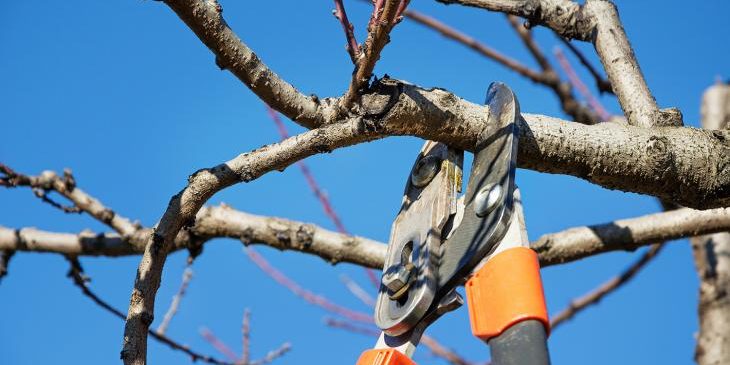Tree trimming is a crucial aspect of maintaining healthy and aesthetically pleasing trees. Proper timing plays a significant role in achieving the best results. In this blog post, we’ll explore the importance of Seasonal Tree Trimming and its benefits.
Regular tree trimming promotes tree health, safety, and overall appearance. By understanding the optimal timing for tree trimming, you can enhance your landscape and contribute to the well-being of your trees.
The Importance of Seasonal Tree Trimming
Why Trim Trees?
Seasonal Tree trimming is essential for safety, aesthetics, and tree health. It removes dead or diseased branches, preventing hazards during storms. Trimming also enhances a tree’s appearance and promotes proper growth. Neglecting tree maintenance poses risks like falling branches, property damage, and electrical hazards. Regular trimming prevents these dangers and ensures trees remain healthy and safe.
Optimal Timing for Tree Trimming
In spring, as nature awakens from its winter slumber, it’s the perfect time to give your trees some attention. Removing deadwood not only improves the tree’s appearance but also promotes new growth by allowing sunlight and nutrients to reach the healthy branches. When summer arrives and temperatures rise, focusing on shaping and thinning the canopy becomes essential. This practice not only enhances the tree’s aesthetic appeal but also improves air circulation, reducing the risk of fungal diseases and pest infestations. As the vibrant colors of autumn paint the landscape, it’s time to prepare your trees for the challenges of winter.
Hiring a Professional Arborist
Hiring a certified arborist for tree trimming brings many benefits. Certified arborists are experts in tree care. They know how to assess tree health accurately. Their trimming techniques promote long-term tree vitality. Choosing a reputable tree care service is crucial. Look for companies with certified arborists on staff. Check their certifications and affiliations. Read reviews to gauge their reputation. Request written estimates for transparency. Ensure they are fully insured. Following these tips helps ensure quality tree care and healthy, vibrant trees for years to come.
Benefits of Seasonal Tree Trimming
Health and Vigor
Regular trimming plays a vital role in maintaining strong branch structure and reducing the risk of disease in trees. By removing dead or weak branches, trimming encourages the growth of healthy branches, promoting a sturdy and balanced tree structure. Additionally, proper pruning enhances nutrient distribution within the tree. When dead or diseased branches are removed, the tree can allocate more nutrients to healthy branches and new growth, supporting overall tree health and vitality.
Safety
Removing dead or hazardous branches is crucial for preventing accidents and ensuring safety. Dead branches can easily break off and fall, posing a risk to people, property, and vehicles below. By proactively identifying and removing these branches, the likelihood of accidents and injuries is significantly reduced. Trimming near power lines and structures is equally important for safety reasons. Overgrown branches can come into contact with power lines, increasing the risk of electrical hazards such as fires or power outages.
Aesthetics
Well-pruned trees not only enhance curb appeal but also increase property value. Proper pruning improves the overall appearance of trees, making them look more attractive and well-maintained. This can significantly boost the aesthetic appeal of a property and leave a positive impression on potential buyers or visitors. Examples of beautifully shaped trees include neatly trimmed ornamental trees with symmetrical crowns, carefully pruned fruit trees bearing abundant and healthy fruits, and gracefully shaped shade trees with well-spaced branches.
Tree Trimming Techniques
Crown Thinning
Selective branch removal is a process aimed at improving light penetration and air circulation within the tree canopy. This involves carefully identifying and removing specific branches that are crossing, rubbing, or overcrowding within the crown. Crown thinning, a specific type of selective branch removal, offers several benefits for overall tree health. By selectively removing branches throughout the crown, the tree’s canopy becomes less dense, allowing more sunlight and air to penetrate. This promotes better nutrient distribution and photosynthesis, resulting in healthier foliage and improved vigor.
Deadwood Removal
Removing dead or diseased branches is crucial for the health and safety of trees. Dead branches pose a significant risk as they can break off and fall unexpectedly, potentially causing injury or damage to property. Additionally, diseased branches can spread infections to other parts of the tree, compromising its overall health.To identify deadwood, look for branches that lack buds, leaves, or any signs of life. Dead branches may also appear brittle, dry, or discolored compared to healthy branches. When removing dead or diseased branches, it’s essential to use proper pruning techniques to minimize damage to the tree.
Structural Pruning
When trees are young, shaping them through structural pruning is crucial for their growth. By removing competing or poorly positioned branches, structural pruning helps create a sturdy framework of branches. This encourages a strong central leader and evenly spaced lateral branches, promoting a balanced crown. Well-spaced branches ensure the tree’s stability and reduce the risk of structural issues. This strategic pruning also prevents weak attachments and included bark, enhancing the tree’s resilience. Overall, structural pruning shapes young trees for healthy growth and long-term stability.
Common Questions About Tree Trimming
Q1 When Should I Trim My Fruit Trees?
A1 Pruning fruit trees is essential for promoting healthy growth, maximizing fruit production, and maintaining overall tree vitality. The timing of pruning plays a crucial role in achieving these goals.
Q2 Can I Trim My Trees in Winter?
A2 Winter trimming, while often necessary for fruit trees and other woody plants, does carry certain risks that growers should be aware of like Cold Injury, Delayed Healing and others
Q3 How Often Should I Trim My Trees?
A3 When it comes to pruning trees, general guidelines based on tree type and growth rate can help ensure effective and appropriate maintenance because it depends from tree to tree.
The Impact of Weather Conditions on Tree Trimming
Extreme weather conditions such as heatwaves or storms can impact tree trimming decisions by posing safety risks and affecting tree health. During periods of high heat, trimming should be scheduled in the cooler parts of the day to minimize stress on trees, while stormy weather calls for caution to avoid working in hazardous conditions.
Seeking Expert Advice
Seeking expert advice is crucial; readers should consult with a professional arborist for accurate guidance on tree care and trimming techniques. Regular tree assessments by arborists help identify issues early, ensuring trees remain healthy and safe on their property.
Conclusion
In the ever-changing dance of seasons, our trees stand as silent witnesses to the passage of time. Seasonal tree trimming isn’t just a chore; it’s an investment in the vitality and beauty of our natural surroundings. As we’ve explored the art and science of pruning, we’ve discovered that timing is everything. From the delicate blossoms of spring to the frost-kissed branches of winter, each season offers a unique opportunity to sculpt and nurture our arboreal companions.
Remember, when you pick up those pruning shears, you’re not merely shaping branches; you’re shaping the future. A well-trimmed tree is more than aesthetics—it’s a testament to care, resilience, and stewardship. So, whether you’re tending to an ancient oak or coaxing life into a sapling, embrace the rhythm of the seasons and let your tree thrive.
Visit Us at Green Tree Co
For more information and expert guidance, visit us at Green Tree Company. We’re here to provide you with comprehensive tree care services, ensuring the well-being of your arboreal friends. Whether it’s root pruning, disease management, or urban tree solutions, our team is dedicated to preserving the natural beauty around us. Join us in our mission to protect and cherish the trees that enrich our lives!







